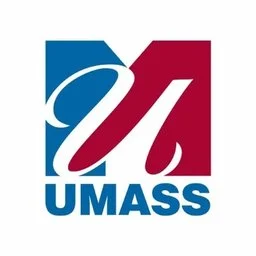NURS FPX 4030 Assessment 2 Determining the Credibility of Evidence and Resources
Place Your Order NowNURS FPX 4030 Assessment 2 Determining the Credibility of Evidence and Resources
NURS FPX 4030 Assessment 2 Determining the Credibility of Evidence and Resources
Healthcare professionals, particularly nurses, ought to emphasize the credibility and quality of sources of information when implementing evidence-based practice to enhance patient care quality and safety (Zheng et al., 2023). It is crucial to prioritize research supported by scholarly publications over internet-based sources, once the gravity of the healthcare issue has been established. This paper aims to emphasize the utilization of credible journal articles to support evidence-based practice in the appropriate management of stroke in the emergency department.
Quality or Safety Issue
Stroke is a critical medical condition associated with a mortality rate that surpasses that of many types of cancer. According to Zheng et al. (2023), it is the second leading cause of mortality in developed nations and the primary cause of significant and enduring disability among adults. Besides affecting patients and their families, there are significant economic repercussions. Moreover, the prevalence of stroke is rising due to the aging of populations, posing a significant challenge for health planners. According to Liu et al. (2022), using an evidence-based guideline may optimize post-stroke patient outcomes and emergency nursing treatment for acute stroke patients. Since the Emergency Department is where the continuum of stroke treatment begins, multidisciplinary standards for acute stroke therapy must include evidence-based urgent nursing care recommendations (Rababah et al., 2021).
Criteria for Determining Credibility of Resources
Certain criteria should be taken into account while assessing the reliability of resources. The Currency, Relevance, Authority, Accuracy, and Purpose (CRAAP) test allows healthcare providers to assess the purpose, authority, relevance, accuracy, and currency of a source. First, a source’s currency should be considered while evaluating its trustworthiness. The currency test ensures that the reference is up-to-date and has been used within the last five years. Considering the author’s qualifications, publication date, and indexing when analyzing a journal or website’s reliability. Hence each of the sources I looked at not only did well on the CRAAP tests but also addressed issues that were pertinent to the safety concerns I had (Rababah et al., 2021).
Analysis of the Credibility and Relevance of the Evidence and Resources
Middleton et al. (2019) conducted a randomized controlled trial to assess the efficacy of an intervention aimed at enhancing triage, therapy, and transfer processes for individuals with acute stroke in the emergency department. This study is current and relevant to the research topic, as it is authored by medical professionals who provide credibility to the information presented. The purpose statement is also clearly defined. In their study, Liu et al. (2022) conducted a quality improvement project to assess the efficacy of a standard care bundle intervention in preventing stroke-associated pneumonia. This study is also current and relevant to the research topic, as it is authored by medical professionals who provide credibility to the information presented. The purpose statement is also clearly defined.
Zheng et al. (2023) used the acute ischemic stroke-associated pneumonia scoring scale in quasi-intervention pilot research to examine the effects of nurse-led hierarchical management care on patients with acute ischemic stroke (AIS). This study is also current and relevant to the research topic, as it is authored by medical professionals who provide credibility to the information presented. The purpose statement is also clearly defined. In a recent research, Rababah et al. (2021) evaluated the effect of an evidence-based training program on healthcare workers’ general knowledge of stroke by using a randomized block design with a post-test-only approach. Rababah et al. (2021) provided the most valuable evidence among the four sources, suggesting that Stroke education should be a mandatory component of professional development for all healthcare professionals in emergency settings.
Evidence-Based Model
Several models and frameworks have been created to help nurses better understand the process of implementing evidence-based practice. Frameworks and models are essential in facilitating the promotion of safe and outstanding nursing practice. The EBP implementation process will be guided by the Iowa model, which will facilitate the incorporation of principles related to stroke prevention and treatment into real clinical practice within the emergency department. The model was chosen for its problem
Order Now






